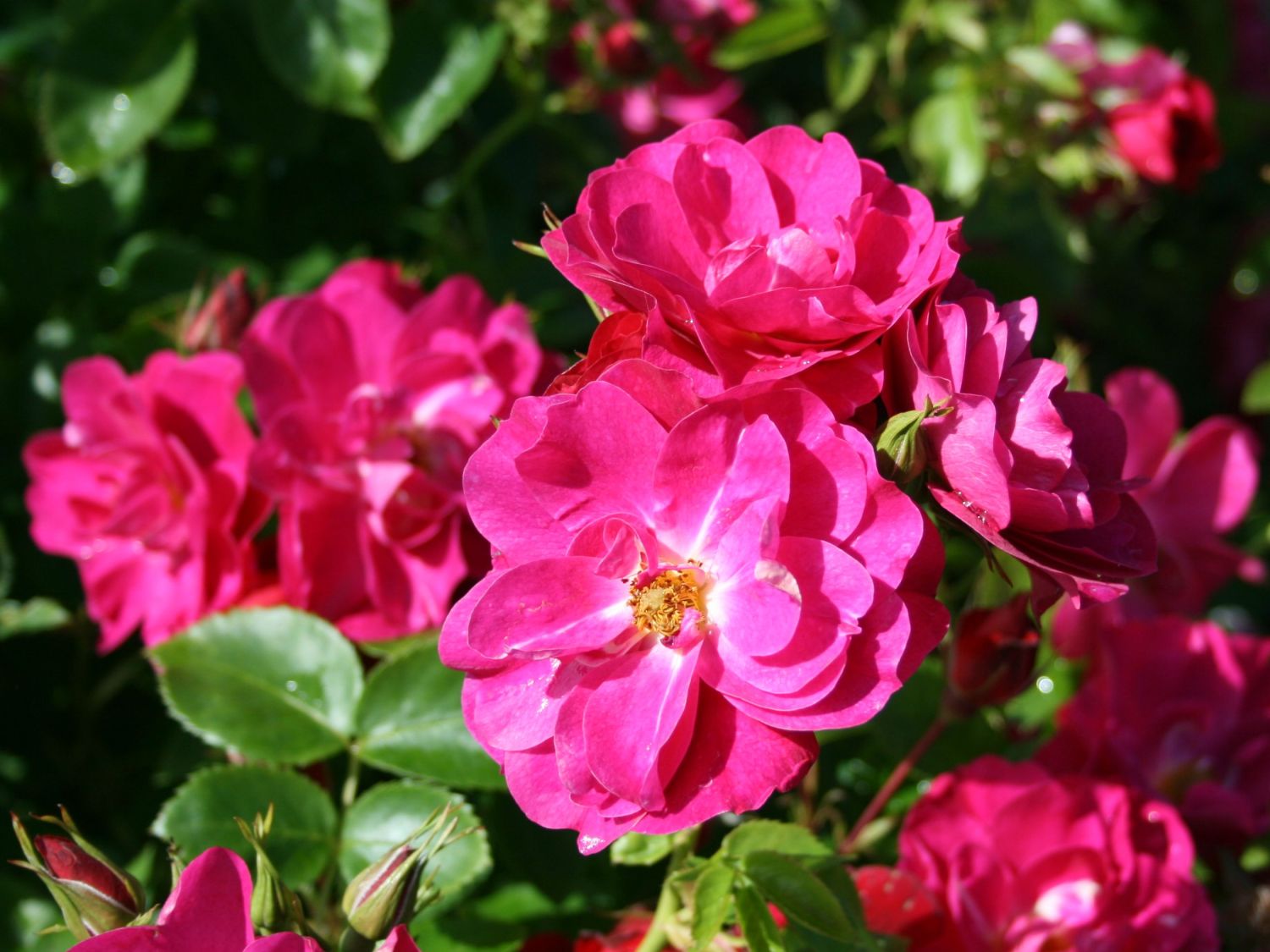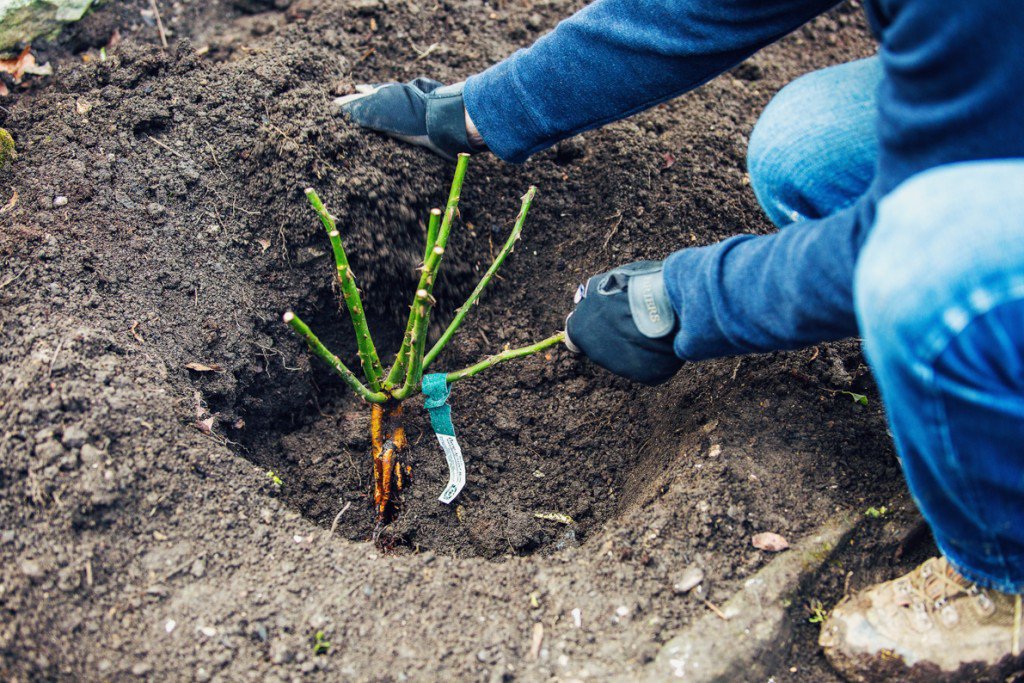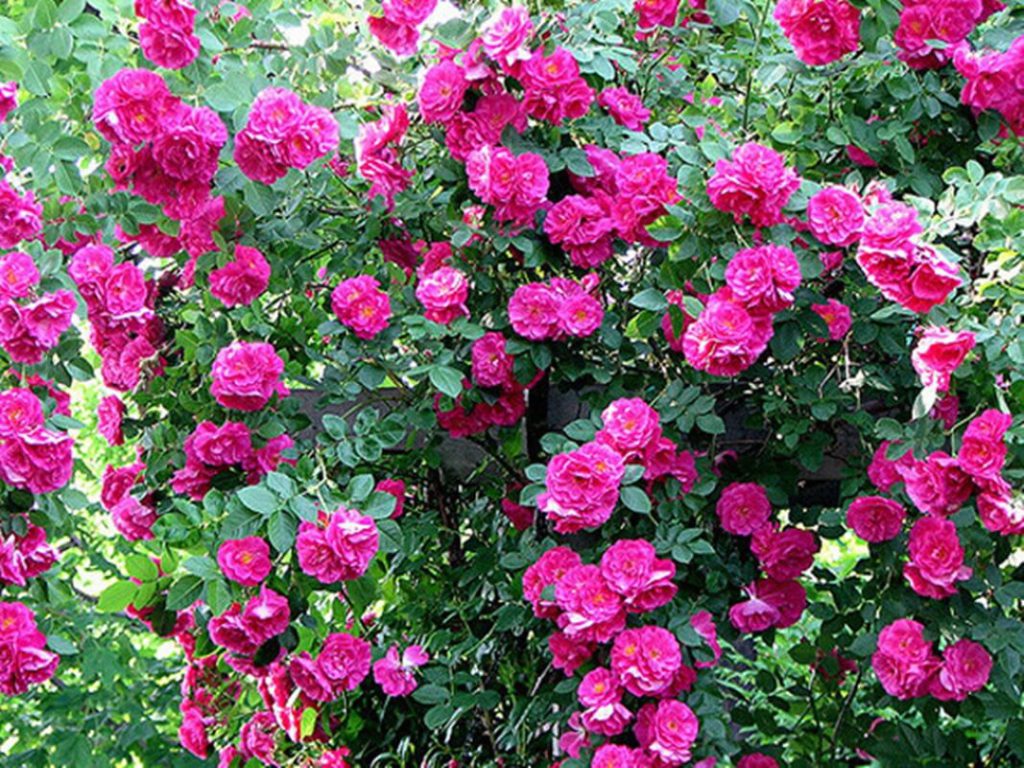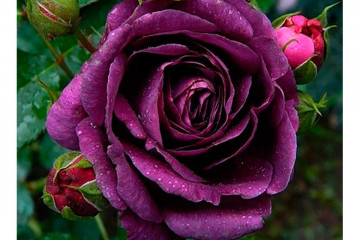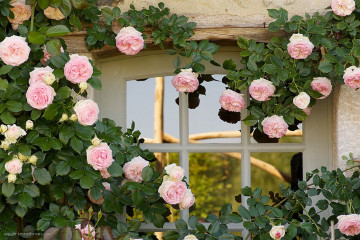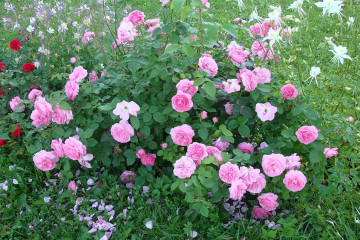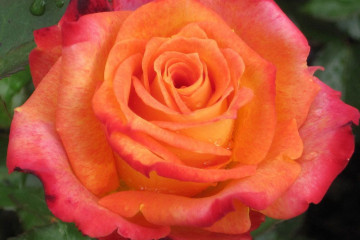Rose John Cabot
Content:
Winter-hardy roses are a long-standing dream of Canadian breeders. Thanks to the efforts of the scientists of this country, Canadian roses smelled in many northern regions of the world. In Russia, they decorate the gardens of the Moscow region, the Urals, Siberia, the Far East. Rose John Cabot is the first-born among the hybrids of the Explorer series, all of which are famous for their frost resistance, unpretentiousness, and abundant flowering. Simple caring for Canadians is within the power of even inexperienced gardeners.
Rose John Cabot - variety description
John Cabot is the first in the Explorer series of hybrids to combine frost-resistant rose varieties. The work of breeders has been funded by the government of Canada for about a century.
Explorer Series
In 1968, Felicia Sweida managed to create a hybrid by crossing the decorative Cordesia rose with one of the wild species of the Canadian rose hips. This variety was named after an Italian navigator of the 15th century. John Cabot, who studied the shores of distant Canada. All subsequent hybrids Felicia Sweida began to call the names of the Canadian discoverers. This is how a series of roses called Explorer was born.
Pros and cons of John Cabot rose
The unique qualities of the John Cabot variety - the firstborn of the Explorer series - were appreciated by gardeners only 30 years after its creation, when it was experimentally established:
- the variety successfully tolerates frosts down to -30 ° С, does not require shelter for the winter;
- it is resistant to major rose diseases;
- gives abundant flowering twice a summer;
- easily propagated by cuttings.
Against the background of the indisputable advantages of the plant, its disadvantages are not noticeable to everyone:
- a weak aroma of flowers, which, moreover, quickly fade and fade;
- rare but sharp thorns;
- slow vegetation - in cold climates, the plant lags behind the second wave of flowering.
But this does not prevent John Cabot rose bushes from being an adornment of any landscape.
Use in landscaping
Climbing Canadian rose John Cabot has versatile decorative properties:
- it looks great as a tapeworm - a sprawling bush standing alone on a green lawn with a lush pink bloom;
- rose branches: flexible, long with sharp thorns - capable of forming a hedge, masking unsightly buildings, winding beautifully around arches and columns;
- a rose bush can serve as the main accent of a flower garden, decorate a mixborder.
The firstborn of Canadian pink hybrids will organically fit into any park style: classic French, romantic English, rural country landscape and intricate modern.
Growing
John Cabot is planted mainly with seedlings, which are of two types: self-rooted and grafted.
- own-rooted - these are bushes grown from cuttings of the original variety; they grow slowly, give abundant color only in the 3rd year, but they are distinguished by reinforced concrete endurance, do not get sick, never run wild, bloom up to 40 years;
- the grafted seedlings have a characteristic stump in the area of the root collar, a powerful root system, they quickly take root, bloom profusely in the first year, but after the freezing of the aboveground part, these plants lose their decorative properties, run wild, turning into an ordinary wild rose.
Boarding time
The optimal planting time in the northern regions is April-May; if the seedling is purchased in a container with "native" soil, it is permissible to plant it on summer days. In the fall, planting John Cabot seedlings is risky: early frosts will prevent the plant from taking root and preparing for winter.
Seat selection
Canadian roses are drought-resistant, their roots do not like the close occurrence of groundwater, and their shoots are low-lying, where cold air stagnates. The swampy soil of the lowlands contributes to the development of diseases. For landing, you need to choose elevated sunny places with an orientation to the south, southwest, southeast. It is worth taking care of protecting the bushes from the northerly winds, but the southern wall of the building is not the best place for a Canadian. Several times during the winter, an uncovered rose will endure thaws and frosts, and this, in the end, can destroy it.
Soil preparation
For planting, a moderately moistened loamy soil is suitable with a cultural layer to a depth of 40-50 cm.The groundwater level should not be higher than 1 m.For planting, a fertile soil is prepared - a mixture of components:
- peat;
- humus;
- ash;
- sand;
- manure (optimally horse).
The sand is used to drain and stabilize the bush. All other elements are needed to power roses.
Landing
It is better to plant a rose bush together - in four hands:
- You need to dig a hole measuring 70 x 70 cm (depth and diameter).
- Fill it two-thirds with prepared fertile soil, water it.
- One person holds the seedling so that its root collar goes deep into the hole 3 cm below the surface (three fingers width).
- Another at this time spreads the roots of the bush along the hole, covers it with fertile soil, tamp it.
- The seedling is abundantly watered and mulched.
After watering and compaction of the soil, the root collar should remain underground - this creates the possibility of plant recovery if the ground part freezes out.
Care
For a flower grower who is used to conjuring over capricious roses, caring for Canadians will seem quite simple:
- Watering John Cabot is necessary in the spring-summer period, 1-2 times a week. Moistening is carried out in the evening, when the heat subsides, water is poured under the roots, trying not to wet the foliage and shoots again. Up to 10 liters of water are poured over each bush. At the beginning of autumn, watering is stopped so as not to cause the formation of unnecessary shoots before wintering;
- they begin to feed the Canadian roses in the second year after planting. In the spring, the bushes are fed: with manure - up to 5 kg for each bush; nitrogen fertilizers - up to 30 g per plant; superphosphate (30g); potassium salt (up to 15g). In the summer, every 2-3 weeks roses should be "treated" with liquid organic matter - 5 liters of mullein or horse manure infusion are added;
- pruning in the fall. Before wintering, light pruning is done: the inflorescences are cut off, leaving an external bud at the top of the shoot - a branch will grow from it not inside, but outside the bush, which will save it from thickening. It is worth cutting out all young shoots, the thorns of which sit tightly on the branch - a weak bark will not protect them from freezing, and dead shoots are unnecessary stress for the plant. And, of course, it is worth removing all dry and diseased branches, if any.
Spring pruning relieves frostbite, weak stems. The branches growing inward are cut off, the stems that give the bush a disheveled look. Only the largest shoots with small upper buds are left. Abundant small flowers from weak buds reduce the decorative effect of the bush.Spring pruning is carried out during the period of swelling of the buds; the stem must be cut at an angle of 45 °.
Wintering. All representatives of roses from the Explorer series do not need shelter for the winter - they calmly tolerate frosts up to 35-40 ° C, winter damage to the stems. In the spring, the Canadians of these varieties quickly recover and bloom, as if nothing had happened. The John Cabot variety will bloom more luxuriantly and more abundantly if you spud the bush for the winter, bend the shoots to the ground and provide full snow cover.
Bloom
Enchanting flowering is one of the strengths of the John Cabot variety: it is able to form several dozen roses in a brush, moreover, in different shades that depend on the age of the flowers. For the first 2-3 years, the bush has non-double single flowers, betraying its relationship with the dog rose. John Cabot is in full force for 3-4 years.
Flowering periods
For the first time, the abundant color of the bush occurs in mid-June-July, it lasts 1.5-2 months. In the second half of summer, the plant has rare single rosanches, but attracts with glossy dark green foliage. In early September, the second burst of flowering begins - until the very cold weather. Many ripening buds do not have time to open.
Care in the active period
Being in the active flowering phase, the climbing rose is constantly “thirsty and hungry”. Water for irrigation requires 3-4 times more than during the dormant period. It is good to add nitroammofosk to the water (2 tablespoons per bucket); manure infusion (0.5 l / 10 l). With this care, the bush blooms for 7-10 days longer. Young shoots grow more actively, which will give color the next year.
Rose does not bloom: what to do
Canadians may not produce color if cropped incorrectly. Climbing rose buds are tied on shoots that have grown in the past year. If you cut them incorrectly in spring or autumn, then you can be left without flowers. Rose growers use the following technique in the spring: they force all overwintered stems to creep along the ground. So at the base of the seedling, replacement shoots are formed - the basis of the next year's harvest. As soon as they grow up to 40-60 cm, the flower stalks are straightened, attached to the support, on which they bloom. Another reason for the poor flowering of Canadians may be lack of nutrition, watering. And, finally, you can simply confuse the varieties: bush roses form ovaries at the tops of the shoots - the rest of their buds are vegetative. If you cut off these tops in the spring, then there will be no flowering.
Flower propagation
You can propagate John Cabot by dividing the bush, layering, but the best way to propagate the variety is by cuttings. Using this method, self-rooted seedlings are obtained that retain all the declared varietal properties: frost resistance, immunity to pests and diseases, decorativeness. Cutting order:
- Cutting the cuttings is best during the summer flowering period.
- Choose the strongest shoots of the first year of flowering for cuttings, no shorter than 20 cm.
- Free them from greenery, leaving a couple of leaves on top.
- Plant in a trench, deepening almost the entire length - up to the first leaf.
- Cover the cuttings with paper bags (against sunburn) and plastic bottles (against the vagaries of the weather).
- With abundant watering, the cuttings not only quickly give rise to roots, but also grow out of their paper and plastic shelters by autumn.
- Plants hibernate under a layer of earth and snow, and by the fall of next year they become flowering rose bushes.
Diseases, pests, prevention
John Cabot is disease resistant, but prevention is essential for it too. For convenience, the most common problems of rose bushes and ways to solve them are systematized in the table.
| Diseases and pests | Signs of defeat | Prevention measures |
| Powdery mildew | Whitish bloom on leaves | Spraying ("Topaz", "Skor") |
| Rust | Rusty coating | Reduce the amount of nitrogen in the soil; drainage |
| Black spot | Brown spots on leaves, shoots | Copper treatment |
| Bacterial cancer | Growths on foliage, stems, roots | Transplanting a plant to a dry area Copper sulfate treatment |
General measures for the prevention of diseases: do not plant roses in waterlogged areas; collect and burn all plant debris; do not abuse nitrogen fertilizers and sprinkling. The rest will be completed by the healthy immunity of Canadian roses, which are famous for their resistance to unfavorable growing conditions.
